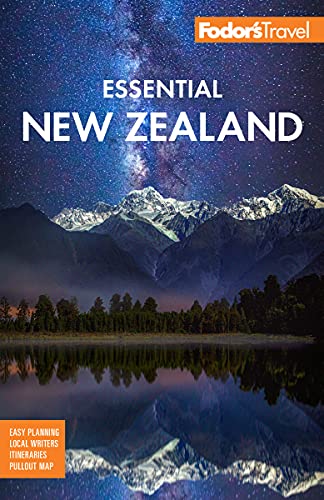Rakiura National Park
Between the rocky beach and a primitive forest at Lee Bay, a plaque at the park's entrance quotes a Stewart Islander: "I must go over to New Zealand some day." More than 200 km (124 miles) of trail unfurl at your feet into pure wilderness: the rest of the world is indeed far removed.
Even the most adventurous travelers to this 1,746 square-km (674 square-mile) island are liable to experience a growing feeling of utter isolation as they go about exploring the lush, bush-clad hills, sand dunes, unspoiled inlets, and beaches strewn with driftwood. Even the weather is inspiring, powering in from a vast ocean over which mollymawks and albatrosses soar. The show does not end with the daylight either, Rakiura in Māori means "glowing skies," referring to the exquisite sunsets and southern lights or aurora australis often visible from here.
Somewhere in the stands of ancient rimu trees and the thick tangle of supplejack vines and ferns are remnants of steam engines, try-pots, and wagon tracks—vestiges of human attempts over the centuries to live and work in these parts. Ancient Māori muttonbirders, Southern Ocean whalers, millers, and miners have all come and gone. A few commercial fishing boats still operate from Halfmoon Bay, the last of an industry that has dwindled over the years. While the rest of the planet succumbs to pavement and steel, Rakiura has become less developed, and the decision to make 85% of it a national park will preserve it so. As you adjust your pack, you may ponder what the island's industry is now. It's tourism (aka you).
Best Time to Go
The summer (November through March) is the best time to visit. Weather is unpredictable this far south, and Christmas barbecues have been known to see a sudden hailstorm. But generally this is the best bet for lovely long days (and the local businesses are all open as opposed to the off-season).
Best Ways to Explore
Mud Walk. Eighty-five percent of the island is national park, and it's thrilling to think that much of that is impenetrable wilderness, never seen or trodden upon by people. Over 200 km (124 miles) of walking trails create some of New Zealand's greatest hikes, including the three-day Rakiura Track and the challenging 11-day Northern Circuit. A popular adventure is taking a water taxi to the trailhead at Freshwater on the east side of the island, and walking across to the West Coast's amazing Mason Bay beach, where you can arrange to have a plane pick you up. It takes close to three hours to walk to the end of the beach, along which is one of the best places to spot a few of the island's 20,000 kiwi birds. Unless you happen upon the island after a rare dry spell, you are sure to encounter copious quantities of mud on these trails so come prepared.
Sea-Sighting. Local companies offer a variety of boat tours: go fishing for Stewart Island blue cod, do a bird-viewing cruise, or view the gorgeous kelp gardens beneath the surface. Water taxi companies can drop you at bird sanctuary Ulva Island or at destinations along the Rakiura coast, or show you the aquaculture (mussel, salmon, and oyster farms) of Big Glory Bay. If the weather is right, nothing beats a kayak trip in Paterson Inlet, where you can visit Ulva, circumnavigate half a dozen tiny islands, and observe penguins (little blue and yellow-eyed).
Flightseeing. Seeing the island by helicopter is an unforgettable experience. If you don't have a week or more to properly tackle the trails, then heli-hiking makes a lot of sense—get dropped at Mason Bay and walk back, or spend a day visiting various far-flung bays and beaches and be back in Halfmoon Bay in time for dinner. Tours can show you the magnificent southern coast, and you will be privy to views of Stewart Island that many lifelong locals have never seen.




